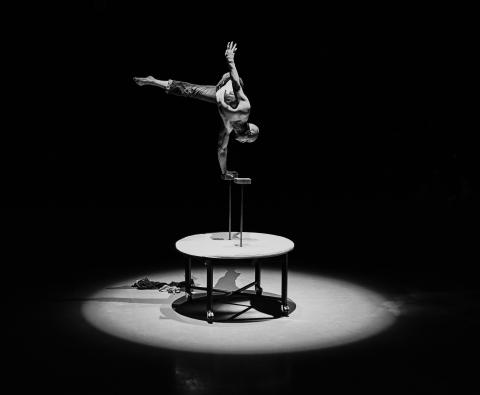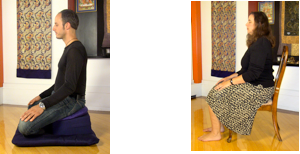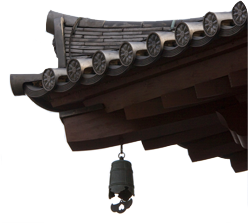
The role of mindfulness awareness meditation for leaders
We all know what human agility looks like. For those of us who have attended a performance of “Cirque du Soleil” or the NYC Ballet, we are fortunate to have witnessed remarkable performers executing flawlessly: muscular, refined, and utterly disciplined. And while we may assume that such creative elegance is unique to the performing arts, today’s business climate filled with calamity, unknowns and crisis is fast making the very same agility the defining skill for leading today’s global enterprises.
Now, of course, this is not to say that our CEO’s or scientist leaders will need to master hand stands and pirouettes – fly with ease on trapezes or effortlessly float in mid air. But they will need to gracefully adapt: “command and control”, “supply and demand” “profit and loss” are fast transforming where self-organizing, innovative networks are reinventing the future and leaders who are agile enough to adapt and align with these networks are poised to transform crisis into opportunity.
But how are our emerging business leaders learning to master such agility? Dancers attend ballet academies and acrobats have gymnasiums where they relentlessly practice and perfect their art. And, not surprising, it is in the halls of our corporate and educational institutions where we find our leaders engaging an emerging field of agility training: leaders learning to sit still for extended periods of time on meditation cushions.
Mindfulness-awareness meditation in business
By now we are all familiar with the impact mindfulness is having in the workplace:
- The Drucker School of Management and Wharton Business School both offer courses in mindfulness meditation
- Virginia Tech is sponsoring “Contemplative practices for a technological society” a conference for engineers who integrate contemplative disciplines into their work.
- Google offers courses in meditation and yoga
Aetna, Merck, General Mills – the list goes on – all have been exploring how meditation can help their leaders and employees agilely thrive in today’s global workplace. And the benefits are widely publicized: sustained attention span, improved multi-tasking abilities, willingness to “de-bias”, strengthened immune system, increased emotional intelligence, improved listening skills…. And there is science behind such claims. Research is fast concluding that sitting still for defined periods of time is a very healthy thing to do.
But what really happens when we meditate? How can such a simple act of sitting still actually cultivate agile, talented leaders?
What is mindfulness-awareness meditation?
For those not familiar with the practice of mindfulness awareness meditation, let’s take a moment to describe what the act entails.
When we practice mindfulness awareness meditation, we take a posture sitting upright, relaxed and alert.

When we sit still like this, we notice the simple vividness of our immediate experience: sounds, sights, smells and sensations. And we also notice that we are thinking - talking to ourselves, commenting on “this and that”, thinking about any number of things. Attending to these two experiences - being alert in the immediate moment and thinking – is central to mindfulness awareness and requires a simple yet exquisitely demanding gesture: placing our attention gently on our breathing.
Attending to our breathing in such a way, especially for extended periods of time, is a tremendously boring thing to do and, ironically, this is where cultivating our leadership agility comes in.
“Letting go”
When we examine this simple and often monotonous act of sitting still, at first glance there appears to be very little going in. But by doing the practice consistently, we notice over time that we are exercising some subtle yet powerful “leadership muscles” that have gone flabby.
For example, during meditation when we notice that we are thinking, we are encouraged to deliberately recognize that we are thinking and then escort our attention to our breathing. Very simple. Yet, in the process we effortlessly “let go” – we release our grip on our internal dialogue and gently bring our attention to our breath. We “let go” of our inner story lines and guide our attention to the simple yet vivid experience of just breathing.
This gesture of “letting go” of our internal gossip while simple, is also a highly concentrated gesture of leadership agility. Like ballet dancers rehearsing a demi-plie or an acrobat practicing a handstand pirouette repeatedly, here in mindfulness awareness meditation we, too, are exercising core muscles of basic human wisdom and agility.
Too often as leaders we tend to “hold on” to what is certain – we want to “know what’s going on”. Especially during a crisis, we may find ourselves absorbed with trying to “fix the situation”, “stem the financial bleeding” “get back to normal” – trying essentially to “hold on” and “know what’s going on.”! All vital priorities no doubt.
Yet, this very tendency to seek certainty by psychologically “holding on” to what is known, especially in a crisis, can have a singularly blinding effect on how we navigate the circumstances that we are trying to “see clearly”. The intent to “know what is going on” may actually blind us from “seeing what’s actually happening”. “Letting go”, on the other hand, of our fixed mindsets, discursiveness, opinions, emotional habits and much more, can provide vital perspective in getting a true measure of the difficulties we are facing. As McKinsey consulting puts it in their research on leadership agility***:
You can’t steer your company through constant change if you are relying on the safety of your own cruise control. To spot opportunities—and threats—in this environment, we must teach ourselves how to have a more comfortable and creative relationship with uncertainty. That means learning how to relax at the edge of uncertainty, paying attention to subtle clues both in our environment and in how we experience the moment that may inform unconventional action.
Developing this kind of inner agility isn’t easy. In some ways, it goes against our very nature, which wants to simplify a problem by applying our expert mind-set and best practices. To address complex problems, we need to become more complex ourselves. We need to recognize and appreciate emergent possibilities. That is how the complexity we face can become manageable, even exciting.
And this is exactly what happens when we bring this muscle of “letting go” alive in how we conduct business - we become agile.
For example, lawyers who practice mindfulness awareness meditation speak to an ability to more readily drop adversarial mindsets, better comprehend the intent of a challenge and self-regulate emotions during conflict. As Professor Leonard Riskin, JD observes in his seminal study of attorneys who meditate:
“Mindfulness can play a role in helping the lawyers….observe – without attachment – the thoughts, feelings, and bodily sensations that typically make up and support (contrasting) mindsets….Consequently, the lawyer can adopt an attitude of curiosity, consider other options and make a discerning decision ….mindfulness can help the lawyer simply notice the manifestations of the feelings of being threatened…..and decide to let them go and maybe learn from them.”*
This lawyerly agility that Professor Riskin is observing here free from fixed mindsets is the very same agileness that business leaders are discovering through mindfulness awareness meditation: a poised yet flexible confidence that is ready to learn, reassess and adapt in the face of novel problems and unforeseen opportunities.
Of course, there is more to being an agile leader than simply “letting go” and today’s unprecedented global crisis requires a lot more than sitting still for 30 minutes a day. Yet, leaders who manage business stress and challenges through mindfulness awareness meditation have found that such a simple act develops many subtle yet highly concentrated “leadership muscles”**. And by exercising such flexibility of mind, leaders prepare themselves to confidently navigate the calamities, unknowns and predicaments emerging in this 21st century. And maybe we may end up executing more like “Cirque du Soleil” master artistes than we may have imagined.
*The Contemplative Lawyer: On the Potential Contributions of Mindfulness Meditation to Law Students, Lawyers and their Clients, by Professor Leonard Riskin JD, Harvard Negotiation Law Review, Volume 7:1
** The Mindful Leader: Ten Principles for bringing out the best in ourselves and others by Michael Carroll (Shambhala Publishing, 2007)
*** Leading with Inner Agility – McKinsey Quarterly 2018 by Sam Bourton, Johanne Lavoie, and Tiffany Vogel

